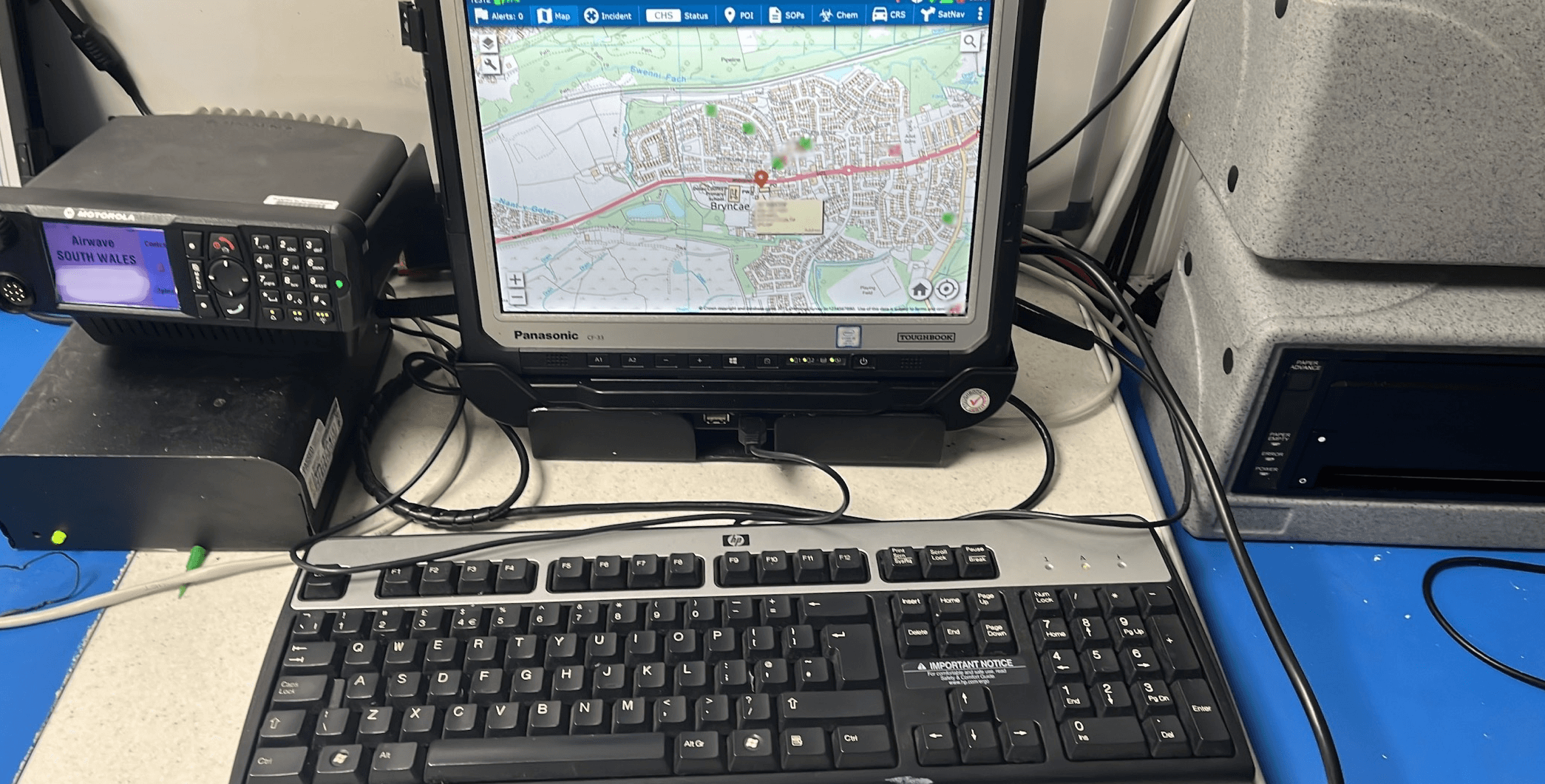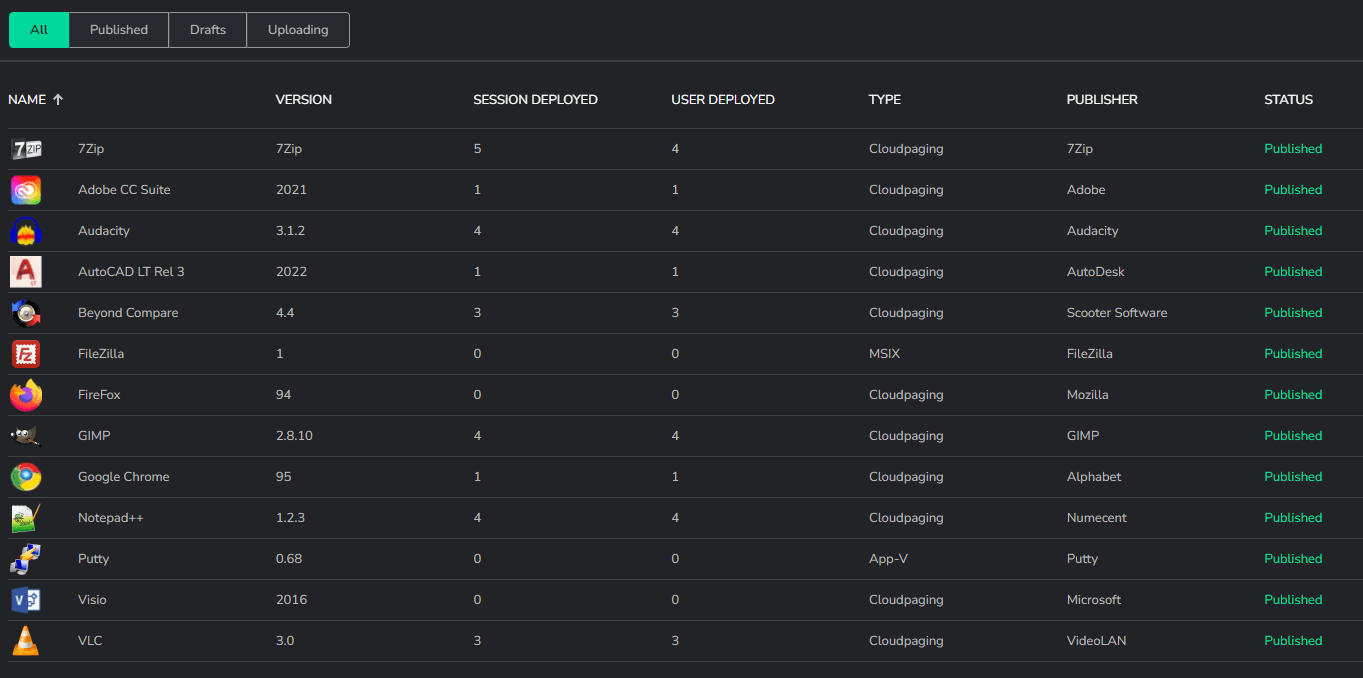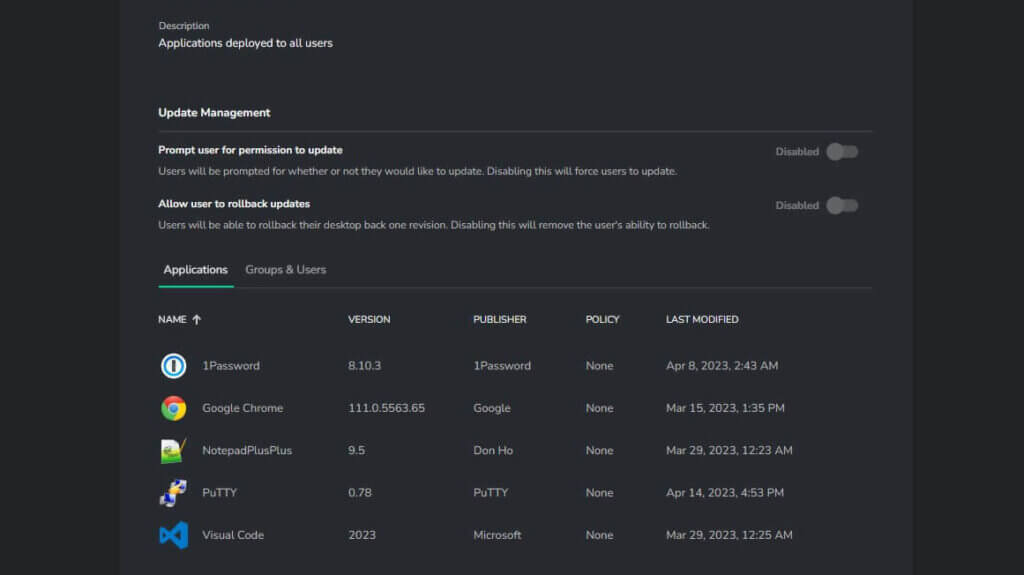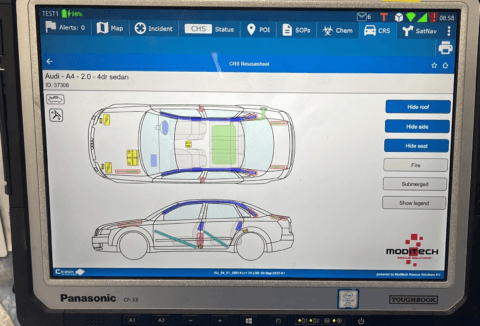Customer Overview
South Wales Fire and Rescue Service is the largest fire service in Wales, which oversees the capital city of Cardiff. The service consists of 1,650 firefighters and staff across 52 sites. The service is known for utilizing cutting edge technology to support innovative initiatives and techniques, recently hosting the World Wildfire Conferences and becoming the first service in Wales to trial body worn cameras to keep its crews safe.
Customer Environment
The ICT infrastructure team is responsible for desktop delivery across the entire organization. As such, streamlining application packaging and provisioning workflows across sites is critical to business continuity and efficiency. Each fire station has four to five physical PC thin clients, the ICT service maintains 500 laptops, a Citrix Virtual Desktop Infrastructure (VDI), and maintains a fleet of ruggedized mobile terminals on the fleet of fire appliances and a Mobile Incident Command Unit In the service, there were old desktops being utilized that proved increasingly difficult to manage and maintain over time as newer technology emerged. There was considerable configuration drift especially with application versions.

Figure 1: South Wales Fire and Rescue Service’s training rig
Challenges
South Wales Fire and Rescue Service Cannot Afford Application Downtime
When preparing for true life-or-death scenarios, South Wales Fire and Rescue Service cannot afford downtime of mission-critical applications. With less than ten IT administrators dedicated to end user computing (EUC) functions for the entire South Wales region, the team needed to modernize its IT operations to effectively mitigate service downtime. Success required the team to streamline application packaging, deployment, and update processes. Moreover, they need a solution that could help them achieve full application virtualization coverage to take full advantage of their VDI.
The mission-critical nature of the organization, as well as the size and complexity of their applications, made traditional application packaging and deployment solutions – such as App-V and PDQ Deploy – “a nightmare to test”. Some applications simply could not be packaged. Those the team could successfully package still required months of testing just to validate whether it could be deployed into production. Many applications that could deploy to VDI were unable to run on their physical laptops.
Mission-Critical Applications Could Not Be Packaged and Delivered in an Efficient Manner
One of the most important applications to South Wales Fire and Rescue Service operations is SafeCommand. The application provides mission-critical information and functionality to first responders as they head to and on the scene of an incident. Providing firefighters with ample time to train on the application is paramount.
Over the years, training required firefighters to get into the trucks themselves and take turns on the controls. A few years ago, IT moved to Remote Desktop Session Host (RDSH) with thin clients at each station, HQ, and a remote training site. The team created a set of VMs with RDSH and VDI to enable firefighters to log into a portal and access this VM from so that they could train on the system away from the in-vehicle appliances.
This was a drastic improvement, as firefighters were able to roam sessions across stations as they traveled for work. However, there were still significant performance issues with online videos and their training environments. These systems were utilizing RDSH services on a golden image that the team described as “clunky to manage and administer”.
Application Updates Could Take the Whole System Down
Application updates compounded their challenges. Ensuring applications such as Chrome were up to date with frequent security releases was time intensive, unreliable, and caused unexpected downtime. A simple application update to an active machine could take the whole system down. With the urgent nature of operations, this is downtime the service could not afford to risk.
Solution
Cloudpaging
South Wales Fire and Rescue Service selected Cloudpaging as its sole solution for packaging applications. The ability to reuse Cloudpaging containers across modern Windows operating systems and devices drastically reduced the amount of application packaging and maintenance overhead required by IT. The goal is to enable firefighters to access their training on any Windows system, regardless of where they sign in.
One of the reasons they chose Numecent is Cloudpaging’s unparalleled application compatibility rate and ability to reuse application containers across Windows devices and operating systems. The SafeCommand application mentioned before had requirements only Numecent’s patented Cloudpaging technology could handle. One being deployment to a Mobile Data Terminal (MDT). MDTs are present on every firetruck and link to South Wales Fire and Rescue Service’s management control system.
Cloudpager
To improve application provisioning, they implemented Cloudpager – the first and only container management platform for Windows desktops. This provides them with a single pane of glass to dynamically provision, update, roll back, or remove applications across South Wales within seconds from the cloud. This drastically differs from their original RDSH solution, which often could not get videos to load on South Wales Fire and Rescue Service training environments or YouTube.
Key Benefits
Streamlining the Application Lifecycle
Automated Application Packaging
The speed and agility are critical to effectively supporting operators in their training and incident response. Thus, automation of desktop IT operations across the organization was heavily prioritized. Cloudpaging Studio has been optimized to seamlessly virtualize applications in a point-and-click fashion, virtualizing applications all the way down to the driver level. Using PowerShell and Cloudpaging’s innovative automated packaging toolkit, South Wales Fire and Rescue Service automated the packaging of applications into Cloudpaging containers, drastically reducing the amount of time and effort required to maintain their application estate.

Figure 2: Example of the Applications tab within Cloudpager (this is not a picture of the South Wales Fire and Rescue Service environment)
“The automated packaging is absolutely brilliant. I’m confident I can run these application packages and scripts to make apps available on our web portal in seconds. It’s a game changer for us”
Paul Iddon, ICT Infrastructure Manager at South Wales Fire and Rescue Service
Seamless Application Updates
Automation of the packaging process, combined with the capabilities of Cloudpaging containers, enables South Wales Fire and Rescue Service’s IT team to update applications in seconds. With Cloudpager, updating an application is as simple as going into a Workpod, unselecting an old application container, selecting a new one, and clicking “publish”.

“Now that I can push Chrome within a couple seconds, updates are easy and users just keep working. It’s well worth it”
Paul Iddon, ICT Infrastructure Manager at South Wales Fire and Rescue Service
Expanding Application Deployment Flexibility
Cloudpager provides IT with the flexibility to either automatically deploy applications to end users or provide self-service access, depending on which mechanism best fits the end user scenario. All laptop and RDSH applications, including all their line-of-business (LOB) applications, are auto deployed via Workpods. Cloudpager Storefront is used for applications that are not required for all team members, including Safe Command and VLC.
Achieving a Single Golden Image
Since adopting Cloudpager, South Wales Fire and Rescue Service was able to establish a single, extremely light golden image for their VDI environment. The only items present in their virtual desktop images now are the Cloudpager clients, Office 365, and their antivirus software. This enabled them to standardize on Citrix VDI running on Windows 10 – with an end goal of only having Cloudpaging and VDA software present on their physical machines too.
Once they have achieved full virtualization and unified operating system coverage, South Wales Fire and Rescue Service will be able to standardize on a single golden image to service the entire organization.
“Achieving a single golden image was critical for alleviating the burden on IT”
Paul Iddon, ICT Infrastructure Manager at South Wales Fire and Rescue Service
Making Life-Saving Technology Instantly Available and High Performing
Training for Real-Time Incident Response
As firefighters are headed to an incident, SafeCommand provides them with real-time insights on how best to approach the situation. On scene, the software is an essential part of safe incident response.

Figure 4: SafeCommand being used in the South Wales Fire and Rescue Service training environment
For example, in a Road Traffic Accident (RTA) with significant structural damage to the vehicle and a passenger trapped inside, SafeCommand will show operatives which parts of the chassis can be safely cut to get the passenger out of the vehicle. In the case of a chemical spill, it provides critical information on how to safely navigate the scene. En route to a fire in a high-rise apartment, it provides a map (CAAD Plan) to see all the entry points to a given building.
Of course, technology is only as great as the people who know how to use it. Access to SafeCommand for training was a hurdle the team had been looking to improve over the years. Before the training environment Firefighters had to sit huddled together in freezing firetruck bays to gain training on the critical environment, which was a large board with a replica of the hardware mounted to it. Due to limited physical appliances, they often had to wait for an opportunity to participate in training.
By packaging SafeCommand with Cloudpaging, the application can now be deployed to any Windows device, allowing. firefighters to log in and train from anywhere. Better yet, virtualizing with Cloudpaging significantly accelerated application delivery and launch times. Traditional installations for this specialized software typically ran multiple hours and sometimes days. When utilizing Cloudpaging packages, machines can be ready for end users within minutes.
Site Inspection Mapping
Another key module of SafeCommand is ScCapture, which is used in the field by Water Inspectors who go on a ‘walk’ to survey Fire hydrants. Connectivity is a challenge but by packaging the application with Cloudpaging, the software can run offline while they are on location and synchronize updates back to the data center once back online.
What’s Next?
All applications, other than Office 365 and the VPN, will be deployed via Cloudpager. The key to doing so is achieving complete application virtualization coverage, which is possible thanks to Cloudpaging’s unparalleled compatibility rate.
About South Wales Fire and Rescue Service
South Wales Fire and Rescue Service serves communities from Porthcawl to Barry, Chepstow to Abergavenny, and many stations in between. To learn more, visit https://www.southwales-fire.gov.uk/.
About Numecent
Numecent is an award-winning cloud technology provider headquartered in Irvine, California. The company’s technology portfolio, built upon 64 patents (and counting), simplifies the mobilization and management of Windows applications across modern desktop and multi-cloud environments. Enterprises around the world – including the largest Fortune 500 companies, cloud service providers, and MSPs – leverage these technologies to package and deploy thousands of applications to millions of end-users in a friction-free manner every day.